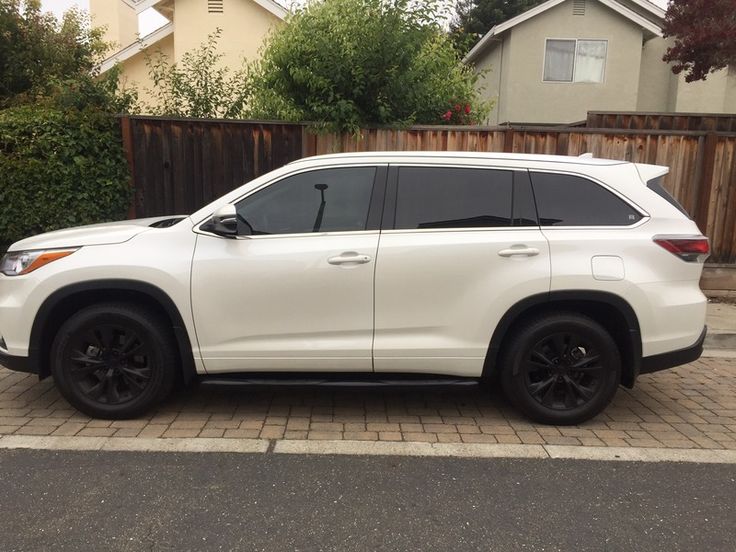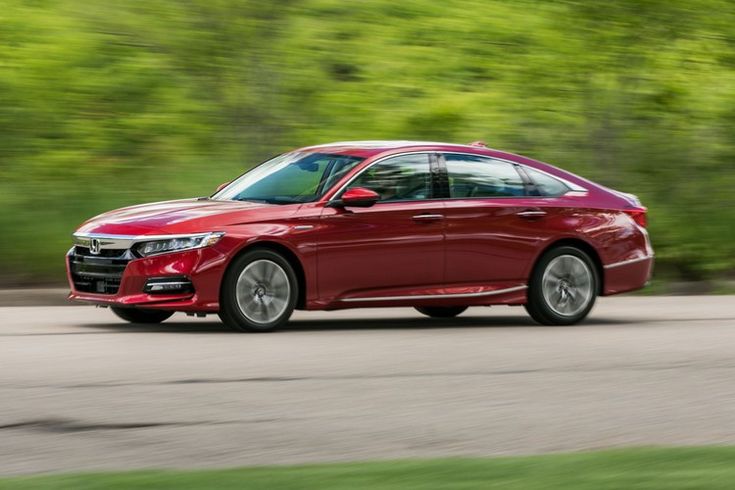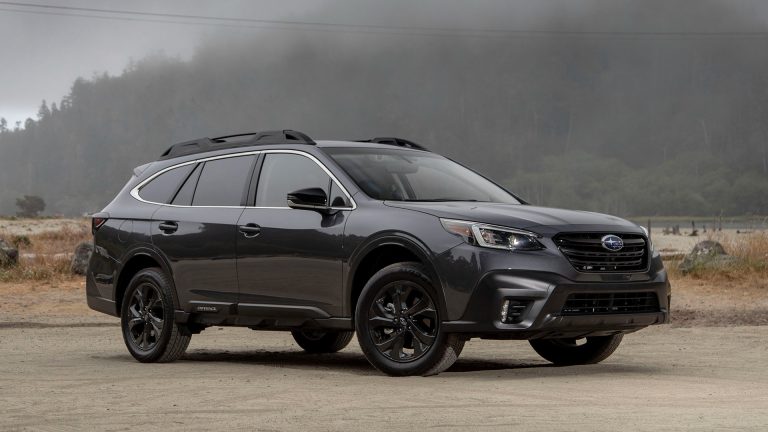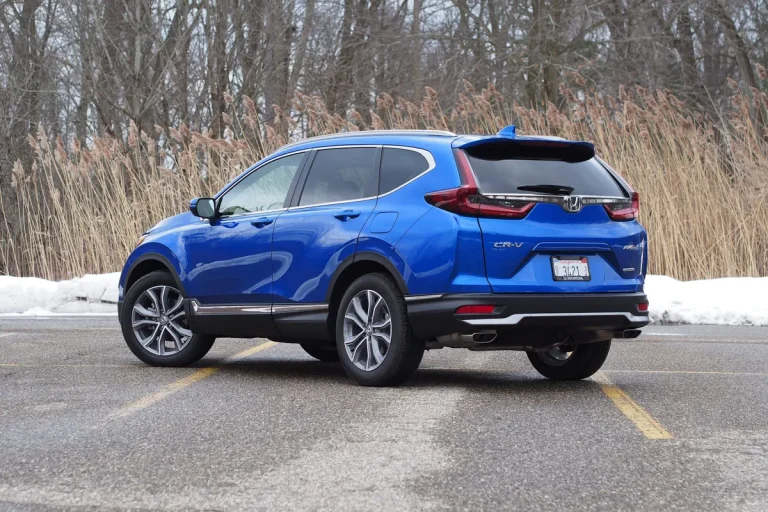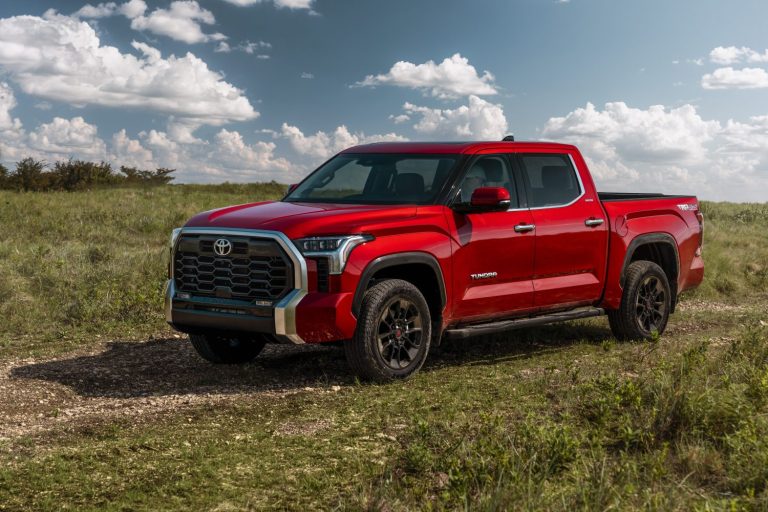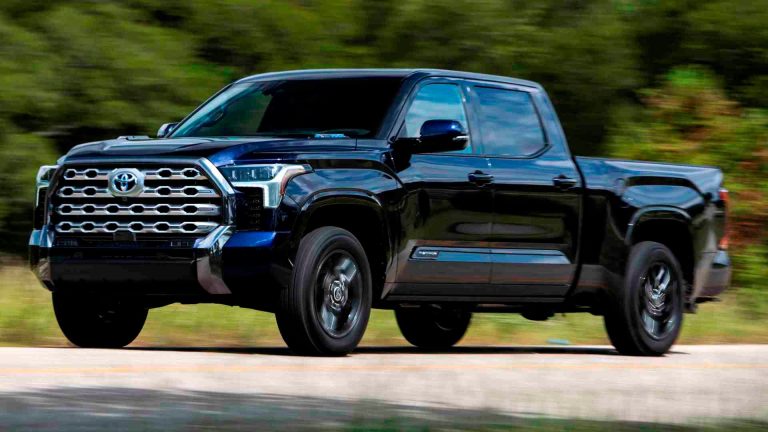Kia has become a serious player in the U.S. automotive market, offering sharp styling, affordable pricing, and impressive tech. But while many of its models feature advanced infotainment, driver aids, and safety features, not all…
5 BMWs That Can Actually Be Daily Drivers vs 5 That Belong in the Garage
10 Cars That Changed U.S. Roads Forever
5 Fords That Rarely Need Warranty Work vs 5 That Use Every Claim
5 Hyundais That Handle Daily Abuse vs 5 That Fall Apart Too Soon
10 Cars With the Easiest DIY Maintenance
5 Sedans That Don’t Fade Inside and 5 That Crack Dashboards
5 Vehicles With Resilient Roof Liners vs 5 With Peeling Headliners
5 Trucks That Rarely Need Brake Work and 5 That Eat Pads Every Month
5 Cars With Easy-to-Operate Controls vs 5 With Sticky Buttons
5 Used Cars That Stay Dependable vs 5 That Fall Apart After Purchase
5 Hondas That Stay Cool in Summer vs 5 That Overheat in Traffic
5 Interiors That Stay Odor-Free vs 5 That Retain Bad Smells
Step inside a vehicle, and one of the first things you notice is its scent. A fresh, clean cabin signals care, craftsmanship, and quality, while a musty, lingering stench can turn even a luxury cruiser into a rolling regret.
For car lovers, a vehicle’s interior isn’t just about stitching, space, or screens. It’s a sacred space where comfort meets personality. But no matter how refined the materials or plush the features, if a car traps odors like a sponge, it’s game over.
Over time, interiors either age gracefully or become a graveyard for stale coffee, gym bags, wet dog, and mystery funk. It’s not just about how the car smells today. The real test lies in how it holds up after years of use.
Odor control is influenced by cabin materials, ventilation systems, moisture resistance, and even the design of seat cushions and carpets. Some manufacturers go above and beyond with antimicrobial surfaces and advanced HVAC filters, while others cut corners with fabrics that soak in every spill and scent.
This list pits five vehicles with odor-fighting interiors against five that can’t shake the stink. We’re talking about models that stay remarkably fresh year after year, thanks to smart design and premium materials. On the flip side, we’re exposing cars that age into smelly disappointments, with fabrics and HVAC systems that hold onto every unpleasant encounter.
If you’re someone who values a clean-smelling car as much as horsepower and handling, this breakdown might just change the way you shop for your next ride. Let’s dive nose-first into the interiors that rise and fall in the battle against unwanted aromas.
5 Interiors That Stay Odor-Free
A truly odor-free interior isn’t just about that “new car smell” it’s about engineering, materials, and smart filtration systems. The best odor-resistant cabins are lined with high-quality textiles, soft-touch plastics, and real leather or treated vegan alternatives that resist absorbing outside contaminants.
They utilize dual-zone or tri-zone climate systems with HEPA-grade cabin air filters and antibacterial vents. These features keep moisture and pollutants from settling inside.
More importantly, cars with odor-resistant cabins have smartly designed seals and drainage systems to prevent mildew from forming under carpets or seats.
Their insulation also plays a role, as dense acoustic materials resist mold buildup and block external pollutants from seeping in. The five vehicles below stand out for consistently keeping their cabins fresh even after years of use. They make long drives and quick errands a pleasure by ensuring that every time you step inside, you’re greeted with clean air, not last week’s regrets.
ALSO READ: 5 Cars So Reliable They Appreciate vs 5 That Become Worthless Used
1. 2024 Lexus RX
Luxury doesn’t just mean soft-touch leather and whisper-quiet rides it also means a cabin that stays fresh regardless of time or use. The 2024 Lexus RX gets this right with one of the most odor-resistant interiors in its segment. From the moment you open the door, the cabin smells refined and clean, with no synthetic overload or industrial plastic scent. That’s no accident.

Lexus uses top-tier materials, including high-grade leatherette or semi-aniline leather depending on trim, all of which are treated to resist odor absorption.
The RX also features an automatic climate control system with a pollen and deodorizing air filter that keeps the interior fresh even in city traffic or damp climates. The seats and carpets are made from low-VOC (Volatile Organic Compound) materials, which means fewer chemicals off-gas into the air over time.
Even with daily commuting or long road trips, the RX’s interior rarely retains smells from food, pets, or gym gear. The upholstery doesn’t trap moisture, and the cabin is well-sealed against environmental pollutants. Another standout feature is its S-FLOW climate control, which directs airflow only to occupied seats limiting unnecessary humidity and keeping odors from circulating.
Owners praise how the RX’s interior feels new long after the odometer rolls past 50,000 miles. Whether you’re a clean freak or just sensitive to smells, the Lexus RX provides an odor-free sanctuary that matches its refined road manners. It’s not just a comfortable ride; it’s a consistently fresh one.
2. 2023 Honda Accord
The 2023 Honda Accord proves that you don’t need to step into a luxury badge to experience a clean-smelling, well-built interior. Honda has mastered the art of combining practical materials with smart cabin airflow and insulation. As a result, the Accord stands out in the midsize sedan segment for having a surprisingly odor-resistant interior, especially when compared to competitors in the same price range.

Honda’s attention to detail begins with the choice of materials. The cloth and leather options in the Accord are tightly woven and coated to resist moisture and stains. This means odors from spills, wet shoes, or damp clothes don’t linger like they do in more porous interiors. The HVAC system includes an air filtration feature that does a great job neutralizing everyday pollutants and road grime.
Another reason the Accord smells clean over time is its cabin seal and drainage layout. Unlike some sedans that trap water in the floor or footwells during heavy rain, the Accord efficiently channels it out, avoiding that dreaded mildew smell. The headliner and trim are also VOC-conscious, preventing the glue-and-plastic odor that plagues cheaper cars.
Whether you’re ferrying kids, coworkers, or cargo, the Honda Accord’s cabin stays surprisingly fresh. For buyers who spend a lot of time commuting or traveling, that makes all the difference. It’s a sedan that not only drives beautifully but also breathes easy inside.
3. 2024 Volvo XC60
Volvo’s obsession with health and sustainability extends deep into the cabin, and the 2024 XC60 is proof. It doesn’t just look clean it smells clean, year after year. That’s thanks to Volvo’s unique combination of premium natural materials, anti-allergen climate tech, and a cabin design philosophy built around air quality.

The XC60 features the brand’s CleanZone technology, a multilayered air filtration system that removes pollutants and odors before they ever enter the cabin. With advanced sensors and a HEPA-style filter, it actively blocks harmful particles and even neutralizes incoming smells like exhaust or smoke from outside traffic. Volvo even uses ozone-reducing fabrics and adhesives in the seats and panels.
Leather surfaces and synthetic trims are coated with anti-bacterial finishes, and the carpets are treated to resist mold buildup. The result? A cabin that smells nearly identical on Day 1 and Day 1,000. Even if you’ve loaded in sweaty gym bags, food takeout, or soaked umbrellas, the XC60 never takes on a sour or musty tone.
Volvo also encourages frequent cabin air refreshes by activating ventilation cycles post-lock, which helps air out lingering moisture. Drivers frequently note how the XC60 smells like a clean hotel lobby rather than a used car even after hard family use. This model shows that premium comfort and air purity go hand in hand.
4. 2024 Toyota Camry
The 2024 Toyota Camry might be a workhorse in terms of sales, but it’s also a sleeper hit when it comes to odor resistance. Year after year, it proves that practical midsize sedans don’t have to reek of fast food and floor mats. Toyota has quietly perfected the formula with this model, offering a cabin that stays cleaner and fresher than many of its peers.

A big part of that success comes from Toyota’s durable interior materials. Whether buyers opt for cloth or SofTex leatherette, these surfaces are moisture-resistant and easy to wipe down. Odor-causing particles don’t get a chance to settle in. The headliner and door panels also feature stain- and odor-resistant finishes, meaning even less chance of trapped smells after a spill or rainy day.
The Camry’s HVAC system deserves credit too. With standard air filtration and a well-ventilated cabin structure, air flows smoothly and cycles efficiently. Moisture doesn’t collect in corners or under carpets, and any humidity that enters during wet weather is quickly whisked away.
Drivers who’ve owned Camrys for five or more years often report that their cars still smell fresh, even with pets, children, and daily wear. It’s not flashy, but the Camry does something many flashier models fail at it keeps the interior from smelling like a forgotten lunchbox. For many, that’s worth its weight in gold.
5. 2023 Mazda CX-5
Mazda has always stood apart for its driver-focused design and craftsmanship, and the 2023 CX-5 brings that same attention to the cabin atmosphere. This compact SUV has a surprisingly upscale interior that feels more European than Japanese, and one major reason for its appeal is how fresh it stays inside.

Mazda uses soft-touch materials and leather that are both durable and less prone to absorbing odors. The fit and finish here are top-notch, with tightly sealed panels and minimal crevices where moisture or crumbs could linger. Even the carpets and headliners feel plush but resist buildup of bad smells.
The CX-5 also sports a very effective dual-zone climate control system with a pollen filter, which goes a long way toward maintaining fresh airflow. Mazda paid attention to airflow placement as well, ensuring that vents distribute air evenly and help prevent areas of stagnant humidity a major culprit of cabin funk.
What really makes the CX-5 stand out is its balance of sporty aesthetic with a healthy living environment. Owners commonly praise how clean the cabin smells even after years of ownership, no matter how many errands, road trips, or wet dog rides they’ve packed in. It’s a car that values sensory enjoyment from the road feel to the fresh air inside.
5 That Retains Bad Smells
Not all interiors age with grace. Some cabins seem almost designed to trap every bit of odor they encounter. Whether it’s cheap foam padding that absorbs moisture, poor ventilation, or flimsy seals that let humidity linger, these vehicles end up as rolling reminders of every spilled drink, wet umbrella, or takeout order. Over time, these smells bake into the fabric and padding, becoming difficult, sometimes impossible to fully remove.
The biggest offenders typically feature cost-cutting interior choices: untreated plastics, cheap cloth, and underperforming HVAC systems. They also often lack proper moisture control under carpets and around door sills, leading to trapped water and mildew. Even a detailer’s best effort can’t erase what’s soaked into poorly chosen upholstery.
Below are five models that suffer from exactly that. They may drive well or offer value on paper, but their interiors often betray them over time. If you’re sensitive to smells or just prefer a clean cabin, these are the ones to approach with caution.
ALSO READ: 5 Dodges That Stand the Test of Time vs 5 That Don’t Make It Past 80K
6. 2022 Jeep Compass
The 2022 Jeep Compass gets a lot of things right off-road flair, rugged looks, and a compact size that suits urban driving. But when it comes to cabin odor control, it’s one of the more disappointing entries in its segment. Over time, the Compass has earned a reputation for interiors that develop persistent smells, especially in high-humidity regions.

A big issue lies in its fabric choices. The base-level cloth seats absorb moisture like a sponge and are prone to developing a damp, musty smell after just a couple of wet-weather outings. If you’re someone who hikes or camps often, expect the scent of wet socks and forest funk to linger far too long. Even the available leatherette trims don’t fully solve the problem, as they still sit on foam that traps odors.
The HVAC system isn’t strong enough to compensate either. While it does have a basic air filtration system, it lacks the kind of odor-neutralizing tech found in competitors. Recirculated air often seems stale, and moisture from AC condensate doesn’t always drain effectively, leading to long-term mildew risks in footwells and carpet padding.
Worse still, the Compass struggles to fully seal out exterior elements. That means city grime, smoke, or even farm dust creeps in and sticks around, especially in older models with worn seals. It’s a shame, because the Compass could be a great adventure vehicle, but unless you enjoy the scent of stale hiking gear, you’ll want to keep a Febreze bottle in the glovebox at all times.
7. 2021 Chevrolet Trax
The 2021 Chevy Trax has many selling points for budget-conscious buyers, but a long-lasting, fresh interior isn’t one of them. In fact, this subcompact crossover is notorious for developing a funky cabin smell within just a couple of years, especially in fleet or high-mileage use.
The problem starts with the materials. The seats use thin cloth upholstery over open-cell foam that quickly absorbs spills and moisture.

With no added treatment to resist odor or stains, even minor accidents from a spilled drink to wet beach towels can leave lingering scents. The Trax’s headliner and door panels also feel budget-oriented and don’t resist mildew well when exposed to humidity.
Even worse, the air conditioning system in the Trax is weak. On humid days, it struggles to clear out moisture fast enough, often leading to a telltale damp smell every time you start the car. Owners frequently report a recurring mildew scent that returns even after cabin cleaning or filter changes.
The interior layout doesn’t help either. There are many tight, hard-to-reach nooks where crumbs and dirt collect places that can grow mold or trap odor-causing bacteria if not cleaned regularly. And since the Trax is often used as a daily commuter or ride-share car, it tends to accumulate wear fast.
Unless you’re a meticulous cleaner, the Chevy Trax’s cabin will likely betray your nose before the odometer reaches six figures. It’s a small crossover with a big problem keeping things fresh inside.
8. 2023 Nissan Sentra
The 2023 Nissan Sentra has made strides in design and tech, but one area where it continues to struggle is in cabin freshness. Owners have consistently reported that the Sentra’s interior, particularly in base trims, develops odors quickly and holds onto them stubbornly over time.
A primary culprit is the low-cost cloth upholstery that adorns the entry-level models.

The fabric is loosely woven and easily traps moisture, especially after rain or snow. Once wet, it doesn’t dry out quickly, allowing that all-too-familiar musty smell to settle in. And the foam underneath lacks odor-resistant treatment, turning the seats into a breeding ground for bacteria if not cleaned promptly.
Additionally, the Sentra’s ventilation system feels underpowered. Even with fresh filters, airflow feels inadequate to fully air out the cabin after rain or a sweaty gym session. This lack of strong circulation makes it easier for stale air and humidity to linger.
Another issue is that the floor insulation and carpet padding aren’t particularly mold-resistant. In areas with frequent rain or high humidity, the cabin tends to harbor mildew under the surface, often going undetected until the odor becomes obvious. By then, it’s too late for a simple fix.
While the Sentra offers decent value and impressive fuel economy, its struggle with interior odors is a big turnoff for those who want a car that stays as fresh on the inside as it looks on the outside.
9. 2022 Ford EcoSport
The 2022 Ford EcoSport may be marketed as a fun, compact SUV for city dwellers, but its cabin can turn funky fast. Among urban drivers and ride-share users, it has built a bit of a reputation for musty, lingering smells that resist regular cleaning efforts.
The materials used in the EcoSport are largely to blame. The synthetic cloth seats are not treated for odor resistance, and once exposed to moisture or food spills, they soak up the stench and keep it locked in. The seat padding is fairly porous, which means even a minor spill can end up smelling days later.

Ventilation isn’t the EcoSport’s strength either. The airflow from the HVAC system lacks the force and filtration to fully clean out the cabin after a sweaty summer day or a rainy commute. The rear seat area in particular seems to trap stale air, especially in models with tinted windows that trap heat and humidity.
The plastic panels and trims don’t help. These hard, shiny plastics feel cheap and retain a faint chemical odor long after delivery. Combined with subpar cabin sealing, the result is an interior that often smells like a combination of synthetic glue, damp towels, and whatever you had for lunch two days ago.
It’s unfortunate, because the EcoSport offers practical storage and compact versatility. But when the air inside doesn’t match the freedom it promises outside, it’s hard to recommend for drivers who value freshness as part of their daily drive.
10. 2021 Mitsubishi Mirage
The Mitsubishi Mirage is all about affordability, and that frugality shows in nearly every inch of its interior, including how poorly it handles cabin odors. While this subcompact hatchback is a solid option for budget drivers, its cabin is not built to stay fresh.
First off, the Mirage’s cabin is filled with low-quality plastics that retain a factory glue smell for months sometimes years. It’s an unpleasant scent that many owners never quite manage to air out. Add to that the base-level cloth seats with minimal moisture resistance, and you’ve got a cabin that’s constantly on the edge of mustiness.
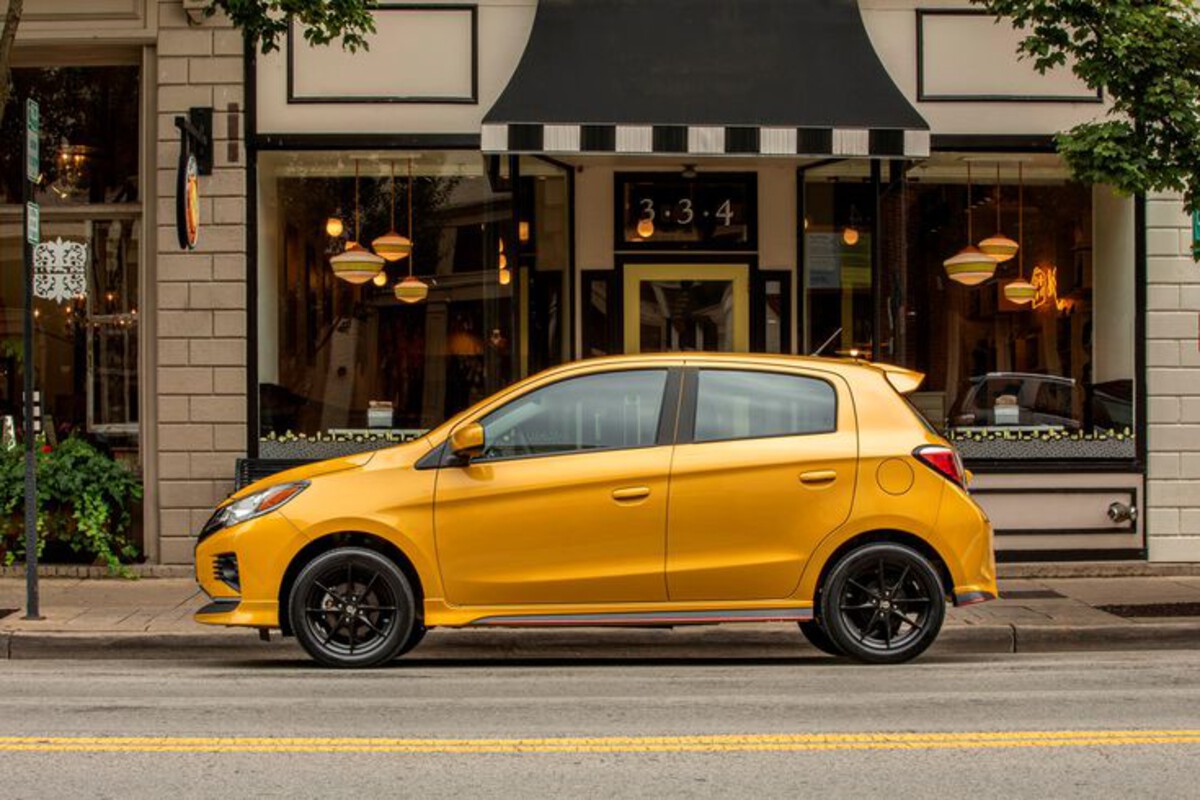
The HVAC system is basic at best. There’s no high-efficiency air filtration, and airflow feels weak even at full blast. Recirculation mode does little to combat strong external smells, especially in traffic or rainy weather. When humidity sneaks in, it lingers helped along by insufficient sealing and floor insulation.
On top of that, the Mirage has one of the weakest undercarpet drainage systems in its class. Water can pool under the mats after a wet day, leading to mold growth that’s hard to detect until your nose finds it. Cleaning or detailing helps only temporarily.
For the most scent-sensitive drivers, the Mirage’s affordability comes at a price one paid in stale air and persistent odors that never really go away. Sometimes cheap really does smell like cheap.
A Breath of Fresh Insight
Interior odor might not be the flashiest spec on a car brochure, but for real-world enthusiasts who spend hours behind the wheel, it can make or break the experience. A well-sealed, thoughtfully ventilated cabin with odor-resistant materials enhances comfort in ways that aren’t always obvious until you’re driving a car that gets it wrong.
The Lexus RX, Volvo XC60, and Mazda CX-5 all show how a dedication to interior health translates into long-lasting freshness. They prioritize breathable materials, antimicrobial fabrics, and climate systems that don’t just regulate temperature but also the quality of the air you breathe. Even the Toyota Camry and Honda Accord, often seen as utilitarian, are surprised by how well they stay clean-smelling thanks to intelligent design.
On the flip side, models like the Jeep Compass, Chevy Trax, and Nissan Sentra reveal how poor ventilation, low-grade textiles, and weak drainage systems allow moisture, mildew, and bad odors to settle in. No amount of air freshener or cleaning sprays can undo the effect of neglected engineering in this area.
What’s clear is that freshness isn’t just a matter of fragrance; it’s a reflection of build quality. Drivers who care about their vehicles deeply know their sensory connection with their machine, and smell is part of that bond. A clean-smelling car feels newer, more inviting, and more loved.
So whether you’re hunting for a luxury ride or a dependable daily driver, don’t overlook what your nose tells you. Sometimes, the best car is the one that always smells like the day you bought it.








